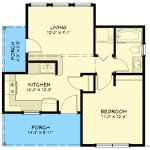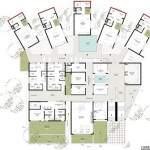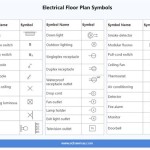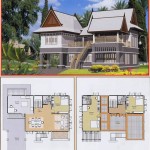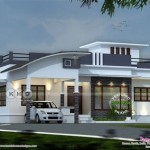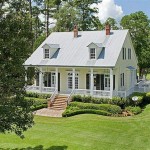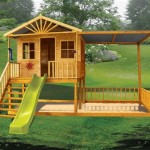Floor Plans With Bonus Room Above Garage: Maximizing Space and Functionality
Floor plans incorporating a bonus room above the garage offer a compelling solution for homeowners seeking to expand their living space without significantly altering the property's footprint. This design strategically utilizes the often-underutilized space above the garage, transforming it into a versatile area that can serve a variety of purposes. The inclusion of such a bonus room can significantly enhance both the functionality and value of a home.
The appeal of this type of floor plan lies in its inherent efficiency. By building upwards, the design minimizes the need for extensive land modifications. For homeowners with limited lot sizes or those living in areas with stringent zoning regulations, a bonus room above the garage presents a practical alternative to traditional extensions or additions. The resulting space is seamlessly integrated into the existing structure, providing a cohesive and aesthetically pleasing expansion.
The design considerations for these floor plans are multifaceted, encompassing structural integrity, access points, insulation, and the intended use of the bonus room. Careful planning is essential to ensure the space is comfortable, safe, and meets the specific needs of the homeowner. Furthermore, local building codes and regulations must be strictly adhered to throughout the design and construction process.
Versatility in Function: Defining the Purpose of the Bonus Room
One of the most significant advantages of a bonus room above the garage is its inherent versatility. The space can be adapted to serve a multitude of functions, depending on the homeowner’s individual needs and lifestyle. Some common uses include:
- Home Office: In an era of increasing remote work, a bonus room can provide a dedicated, quiet space for professional activities. This avoids the disruptions often associated with working from other areas of the house.
- Recreational Area: The space can be transformed into a game room, home theater, or hobby studio. This provides a designated area for entertainment and relaxation.
- Guest Suite: With the addition of a bathroom, the bonus room can be converted into a comfortable and private guest suite, ideal for accommodating visiting family or friends.
- Playroom: For families with young children, a bonus room can serve as a dedicated playroom, keeping toys and activities organized and out of the main living areas.
- Home Gym: A fitness enthusiast can convert the space into a personal gym. The isolation of the bonus room from the main living area allows for workout equipment and minimizes disturbances.
- Storage Space: Although not the primary goal, the bonus room can supplement storage needs, especially for seasonal items or those not frequently used.
The intended function of the bonus room will significantly influence the design choices. For instance, a home office requires ample natural light and electrical outlets, while a home theater may benefit from soundproofing and blackout curtains. A guest suite requires plumbing for a bathroom, while a playroom needs durable flooring and child-safe design elements.
Consideration should be given to the long-term potential uses of the bonus room. While a space may initially be designed for one purpose, future needs may necessitate a change in function. A flexible design that allows for relatively easy reconfiguration can enhance the long-term value and utility of the space.
Structural and Access Considerations: Ensuring Safety and Convenience
The structural integrity of the garage is paramount when adding a bonus room above. A structural engineer should evaluate the existing garage structure to determine if it can support the additional weight and load. Reinforcements may be necessary, including strengthening the walls, foundation, and roof. The garage door mechanism must also be assessed to ensure it operates safely and efficiently with the added weight and structural modifications.
Access to the bonus room is another crucial design element. There are several options for access, each with its own advantages and disadvantages:
- Interior Staircase: An interior staircase typically provides the most convenient and seamless access to the bonus room. It can be integrated into the main living area of the house, creating a cohesive flow. However, this option requires sacrificing space within the main house for the staircase.
- Garage Staircase: A staircase leading from the garage to the bonus room is another common option. This approach preserves space within the main house but can be less convenient, especially during inclement weather.
- Exterior Staircase: An exterior staircase provides direct access to the bonus room without requiring entry through the main house or garage. This can be advantageous if the bonus room is intended to function as a separate unit or guest suite. However, it can also compromise privacy and security.
The chosen access method must comply with local building codes and safety regulations. Staircases must have appropriate handrails, adequate lighting, and slip-resistant surfaces. The location of the staircase should be carefully considered to minimize obstructions and maximize the usable space in both the main house and the bonus room.
Fire safety is another critical consideration. The bonus room must have adequate smoke detectors and fire extinguishers. An escape route, such as an egress window, should be included in the design to provide an alternative exit in case of a fire. The materials used in the construction of the bonus room should be fire-resistant to minimize the risk of fire spread.
Insulation, Climate Control, and Soundproofing: Creating a Comfortable Environment
Proper insulation is essential for creating a comfortable and energy-efficient bonus room. The walls, roof, and floor should be adequately insulated to reduce heat loss in the winter and heat gain in the summer. This will help maintain a consistent temperature and reduce energy costs. Several types of insulation materials are available, including fiberglass, cellulose, spray foam, and rigid foam boards. The choice of insulation material will depend on factors such as cost, R-value (thermal resistance), and ease of installation.
Climate control is another important consideration. The bonus room should have its own heating and cooling system to ensure a comfortable temperature year-round. This can be achieved through various methods, including:
- Extending the Existing HVAC System: If the existing HVAC system has sufficient capacity, it may be possible to extend it to the bonus room. This is often the most cost-effective option, but it is important to ensure that the system can adequately handle the additional load.
- Installing a Separate HVAC System: A separate HVAC system, such as a mini-split system, can provide independent climate control for the bonus room. This is a good option if the existing HVAC system cannot be easily extended or if the bonus room has unique heating and cooling requirements.
- Electric Baseboard Heaters or Space Heaters: These options are relatively inexpensive to install but can be less energy-efficient and may not provide consistent heating throughout the room.
Soundproofing is often overlooked but can significantly enhance the comfort and usability of the bonus room. This is especially important if the bonus room is intended to be used as a home theater, music studio, or home office. Soundproofing can be achieved through various methods, including:
- Using Sound-Absorbing Materials: Installing sound-absorbing materials, such as acoustic panels or soundproof curtains, can help reduce echo and reverberation in the room.
- Adding Mass to Walls and Ceilings: Adding mass to the walls and ceilings can help block sound transmission. This can be achieved by using thicker drywall or adding a layer of soundproofing material between the drywall and the studs.
- Sealing Air Gaps: Sealing air gaps around doors, windows, and electrical outlets can help prevent sound from leaking into or out of the room.
Careful attention to insulation, climate control, and soundproofing will ensure that the bonus room is a comfortable and enjoyable space to use year-round. These considerations directly impact the overall value and appeal of the finished project.

Eye Catching New American House Plan With Bonus Room Above Garage 910004whd Architectural Designs Plans

Bonus Room Above Garage Floor Plans Houseplans Blog Com

Bonus Room Over Garage 23304jd Architectural Designs House Plans

Bonus Room Above Garage Floor Plans Houseplans Blog Com

Plan 280026jwd Amazing Craftsman House With Bonus Room Above Garage Plans

Why A Bonus Room May Make Sense For Your Next Home

Smart House Plans With Bonus Rooms Or Flex Room Floor

Traditional Ranch Plan With Bonus Room Above Garage 444159gdn Architectural Designs House Plans

Plan 51967 Great Four Bedroom Acadian House With Flexible

Smart House Plans With Bonus Rooms Or Flex Room Floor

